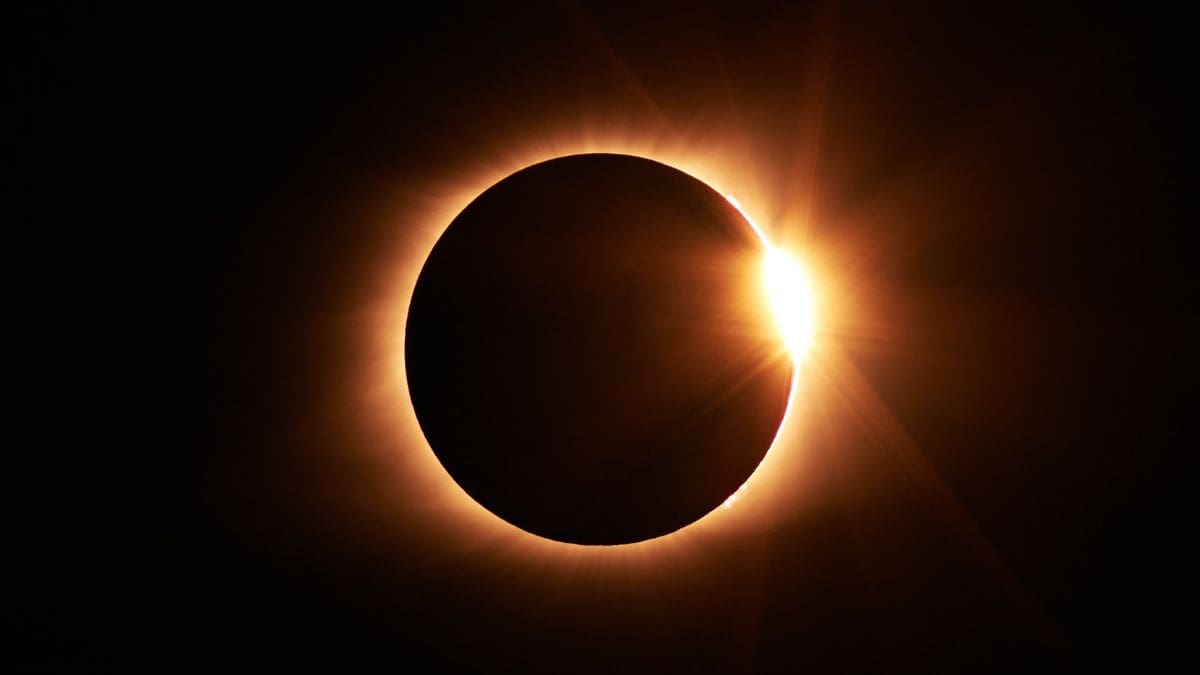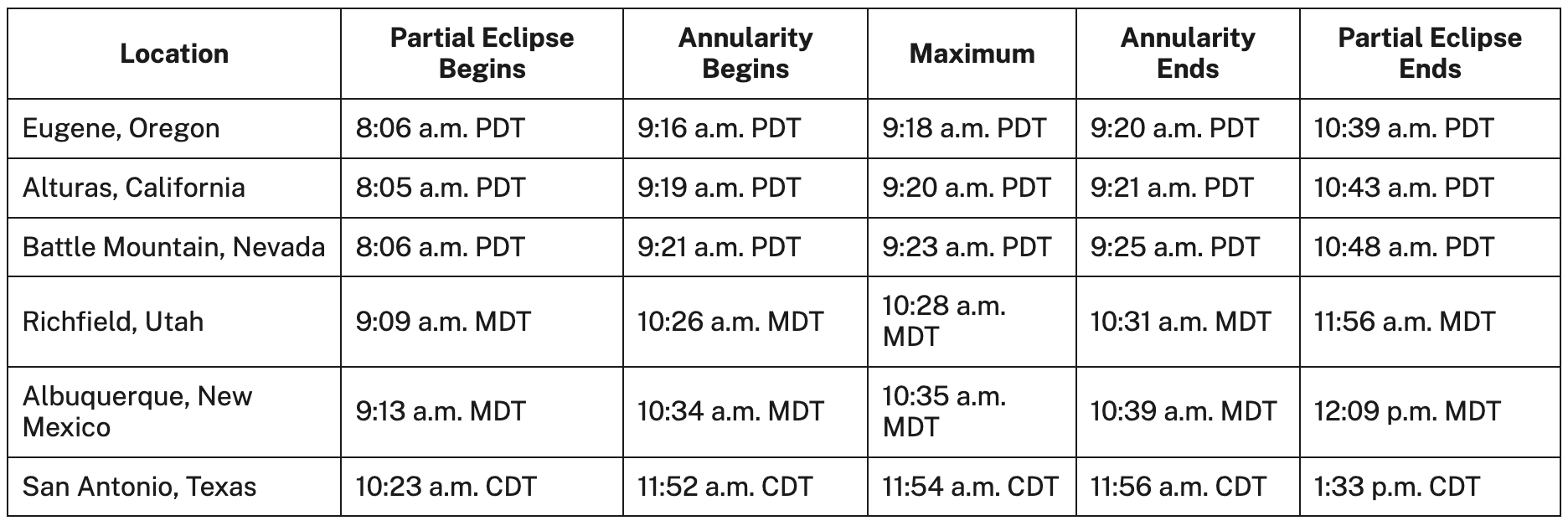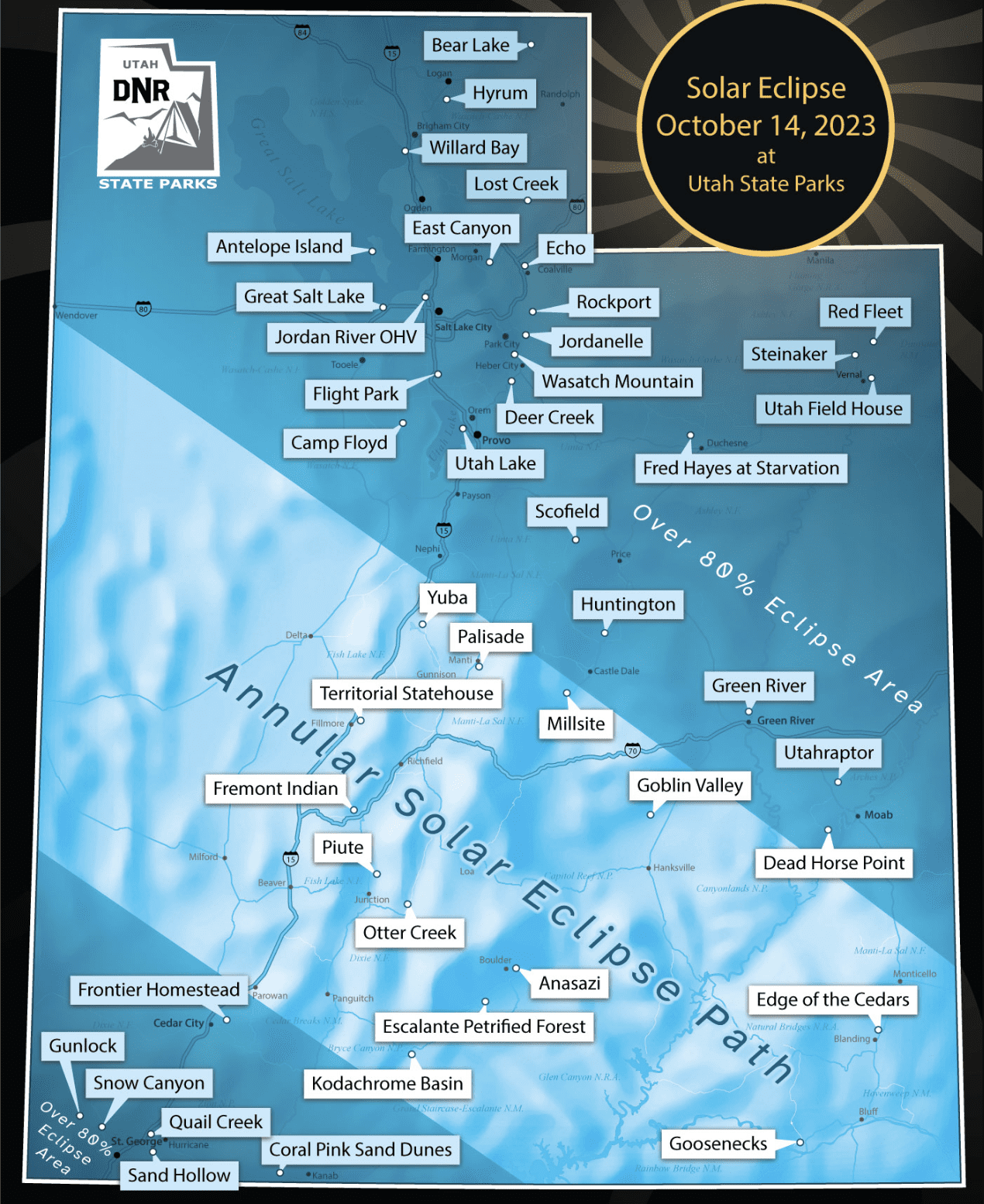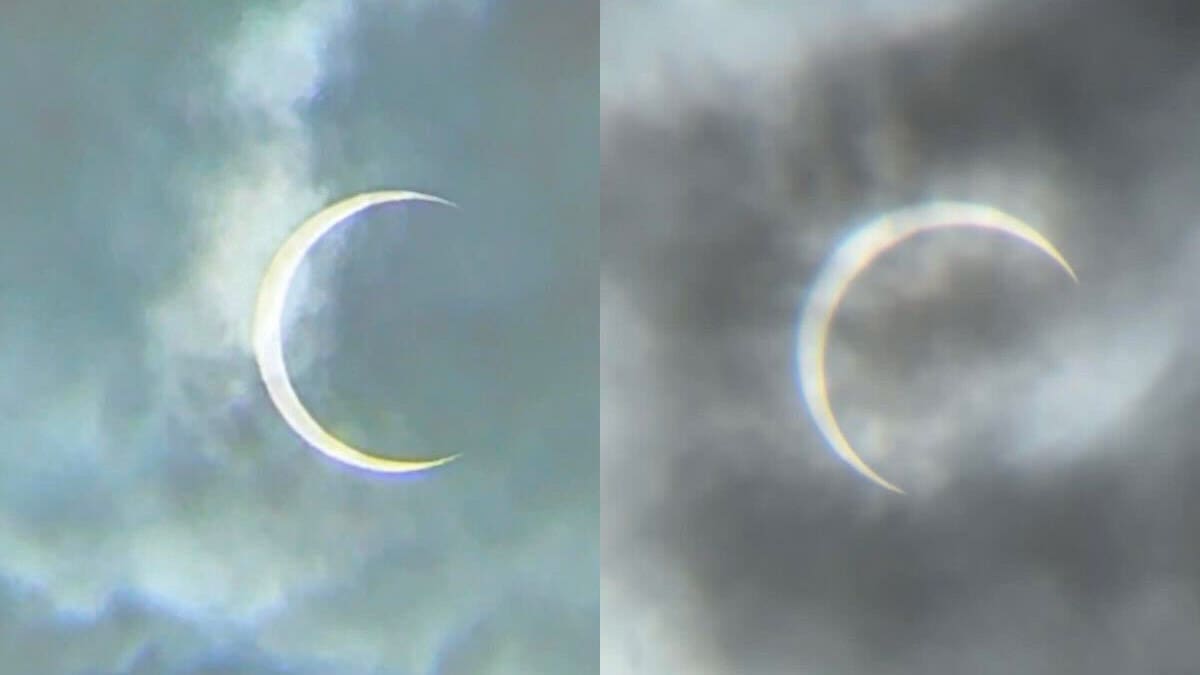Environment
How to view the annular solar eclipse in Utah

Photo: Unsplash // Jongsun Lee
Utah is one of just six states to experience the 'ring of fire' during the Oct. 14 annular solar eclipse
PARK CITY, Utah — Get out your solar viewing glasses, an annular solar eclipse will pass over Utah on the morning of Saturday, Oct. 14.
According to NASA, an annular solar eclipse occurs when the Moon passes between the Sun and Earth when it is at or near its farthest point from Earth. As a result, the moon appears smaller than the Sun and does not completely cover it. This creates a bright “ring of fire” effect around the moon when the eclipse reaches annular totality.
The eclipse will cross through North, Central and South America, and at least a partial eclipse will be visible throughout most of North America. However, the ring of fire will only be visible within a 125-mile path of the eclipse, which passes through just six U.S. states, including Utah.
The eclipse will begin to pass over Richfield, Utah at 9:09 a.m., and reach annular totality at 10:28 a.m.

According to the Utah State Parks Department, the ring of fire should last approximately three minutes, but could be longer or shorter based on your location. The closer you are to the center of the eclipse’s path, the longer the ring of fire will appear in the sky.
Because this is not a total eclipse, NASA recommends using safe solar viewing glasses or a handheld solar viewer at all times to view the annular eclipse.
Regular sunglasses are not safe for viewing the sun. Do not look at the sun through a camera lens, telescope or binoculars, which can cause serious eye injury. Find more information on annular solar eclipse safety here.
To view this celestial event, Utah State Parks has compiled the following list of parks that are within the totality zone, and several that are just outside it.
State parks in the full eclipse zone:
- Anasazi State Park
- Edge of the Cedars State Park Museum
- Escalante Petrified Forest State Park
- Fremont Indian State Park & Museum
- Goblin Valley State Park
- Goosenecks State Park
- Kodachrome State Park
- Millsite State Park
- Otter Creek State Park
- Palisade State Park
- Piute State Park
- Territorial Statehouse State Park Museum
- Yuba State Park
State parks just outside the full eclipse zone:
- Dead Horse Point State Park
- Frontier Homestead State Park Museum
- Green River State Park
- Huntington State Park
- Utahraptor State Park

Appreciate the coverage? Help keep Park City informed.
TownLift is powered by our community. If you value independent, local news that keeps Park City connected and in the know, consider supporting our newsroom.


















